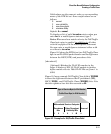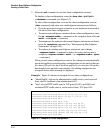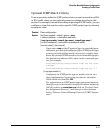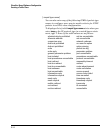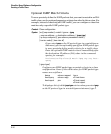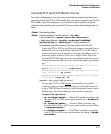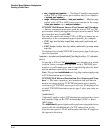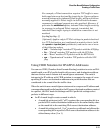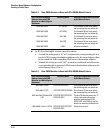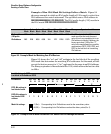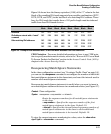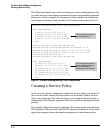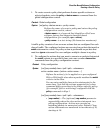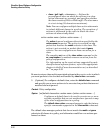
Classifier-Based Software Configuration
Creating a Traffic Class
For example, a Telnet connection requires TCP traffic to move
both ways between a host and the target device. If you configure
a match statement for inbound Telnet traffic, policy actions are
normally applied to Telnet traffic in both directions because
responses to outbound requests are also matched. However, if
you enter the established option, inbound Telnet traffic arriving
in response to outbound Telnet requests is matched, but
inbound Telnet traffic trying to establish a connection is not
matched.
[tcp-flag [tcp-flag ...] ]
(Optional) Applies only to TCP bit settings in packets destined
to a TCP destination port configured as match criteria (with
the operator < tcp-dest-port >parameter) and can be one or more
of the following values:
• ack — “Acknowledge” matches TCP packets with the ACK flag.
• fin — “Finish” matches TCP packets with the FIN flag.
• rst — “Reset” matches TCP packets with the RST bit set.
• syn — “Synchronized” matches TCP packets with the SYN
flag.
Using CIDR Notation for IPv4/IPv6 Addresses
You can use CIDR (Classless Inter-Domain Routing) notation to enter an IPv4
mask-length or an IPv6 prefix-length with a source and destination address
that are used as match criteria in a match/ignore statement. The switch
interprets the IP address with CIDR notation to compute the range of corre-
sponding IP source or destination addresses in packet headers that are
considered to be a match for the traffic class.
When the switch uses a match/ignore statement to compare an IP address and
corresponding mask/prefix length to the IP source/destination address carried
in a packet, the IPv4 mask-bit settings and IPv6 prefix-bit settings select
packets in different ways.
■ An IPv4 mask length creates a mask in which:
• A mask-bit setting set to 0 (“off”) requires the corresponding bit in a
packet’s IPv4 source/destination address to be the same binary value
as the mask-bit in the matching IPv4 source/destination address.
• A mask-bit setting set to 1 (“on”) is used as a wildcard and allows the
corresponding bit in a packet’s IPv4 source/destination address to be
either binary value (0 or 1).
9-19



